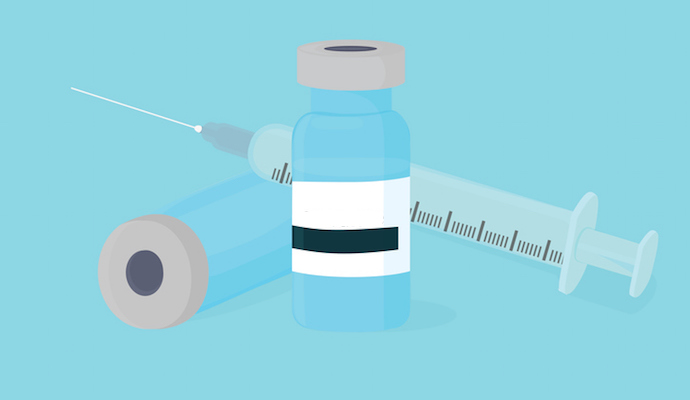Care Volume, Prices Are Increasing in the Outpatient Setting
More care is shifting from the physician office to outpatient setting, which has significantly higher prices, the Health Care Cost Institute reports.

Source: Thinkstock
- Healthcare services performed in the outpatient setting versus the physician office increased from 11.1 percent to 12.9 percent from 2009 to 2017, and the trend is having a significant impact on healthcare costs, according to a new blog post from the Health Care Cost Institute (HCCI).
The average price for healthcare services that can be safely performed in both the office and outpatient setting was always higher when patients received care in an outpatient setting. Average prices also tended to increase faster for the same services in the outpatient versus office setting.
“This trend is important, as services performed in an outpatient setting may come with a facility fee, which is an extra payment in addition to the service rendered that is intended to cover the cost of maintaining the facility,” wrote HCCI researchers John Hargraves and Julie Reiff.
“To address these price discrepancies in the Medicare program, the Centers for Medicare & Medicaid Services (CMS) recently finalized site-neutral payments for clinic visits – meaning that CMS will reimburse these visits at the same rate, regardless of where they occur. This new policy, however, does not apply to the commercially-insured population.”
To understand where commercially- and publicly-insured patients are seeking care and how much they are paying, the researchers at HCCI examined a set of healthcare services that are a subset of ambulatory payment classifications (APCs), which are billing codes used by CMS and other payers to identify and pay for outpatient services.
READ MORE: Average Healthcare Costs for Outpatient Visit Nears $500
They analyzed the utilization and average price paid from 2009 to 2017 of services that the Medicare Payment Advisory Commission (MedPAC) determined to be safe and appropriate to perform in freestanding physician offices as well as the outpatient setting.
The analysis showed that more care is shifting to the outpatient versus office setting, with certain services experiencing a greater transition than others.
For example, echocardiograms and drug administration saw significantly larger shifts towards the outpatient setting compared to other services from 2009 to 2017. The analysis also found:
- The share of level 3 diagnostic and screening ultrasound visits performed in the outpatient versus office setting increased from 20.9 percent to 25.2 percent
- The share of level 5 drug administration visits delivered in the outpatient versus office setting rose from 23.4 percent to 45.9 percent
- The share of level 4 endoscopy upper airway services occurring in the outpatient versus office remained relatively flat during the period at 19 percent
Outpatient settings may have seen significant growth for many healthcare services, but the average prices of those services also experienced substantial increases compared to those set by physician offices.
For level 3 diagnostic and screening ultrasound visits, for example, the average price increased 4 percent in office settings from 2009 to 2017, from $233 to $241, while outpatient settings boosted their average price for the same service by 14 percent during the period, from $568 to $650.
READ MORE: Hospital Execs Focus on Outpatient Growth, Healthcare Costs
Similarly, the average price for a level 5 drug administration rose 15 percent in office settings, from $220 to $254, versus 57 percent in outpatient settings, from $423 to $664.
While the share of level 4 endoscopy upper airway services performed in the outpatient versus office setting was steady during the period, the average price of the service in an outpatient setting increased the most compared to the other services.
Outpatient settings boosted prices by 73 percent, from $1,552 to $2,679, while physician offices only increased prices by 14 percent, from $463 to $527.
The findings of the analysis show that where patients seek care, and where providers refer their patients, significantly impacts how much healthcare services cost the patient and the system at large.
National healthcare spending is slated to total over 19 percent of gross domestic product in the next eight years, according to CMS actuaries. Policymakers and industry experts are attempting to slow the growth of healthcare expenditures but the increase in outpatient setting utilization is challenging some of the reforms.
READ MORE: More Hospitals Sue HHS Over Outpatient Site-Neutral Payments
Hospitals are rapidly acquiring physician offices, with one recent study finding hospital acquisitions of physician practices rose 128 percent since 2012.
With more physicians and offices falling under the hospital outpatient setting, costs of outpatient services that can be safely and appropriately performed in the freestanding physician office are increasing.
CMS is trying to offset the increase in Medicare outpatient costs by implementing site-neutral payment policies. The policies pay hospital outpatient departments a similar rate as that paid to physician offices.
However, site-neutral payment policies do not apply to commercially-insured patients, which may be contributing to the healthcare spending problem, HCCI researchers pointed out.
Implementing site-neutral payments across commercial and public payers will also be a challenge for the healthcare industry. While CMS sees the payment policy as a solution to rising outpatient spending, hospitals oppose the payment method, arguing site-neutral payments do not account for the extra costs for delivering care in the hospital outpatient setting.
The American Hospital Association (AHA) has spoken out against the Medicare site-neutral payment rule for outpatient services.
“Making additional cuts to outpatient payment of the magnitude proposed in the clinic visit policy would be excessive and harmful. It would endanger the critical role that hospital outpatient departments (HOPDs) play in their communities, including providing convenient access to care for the most vulnerable beneficiaries, including the sickest, most medically complex patients,” the hospital group told CMS in September 2018.
